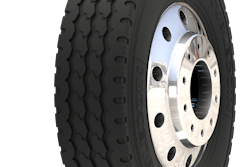By Bill Wade, Wade & Partners
Merrifield: Imagine 1,000 new MBAs hired this year leading two-pizza, innovation-initiative teams guided by 500 customer-centric metrics just trying to give Prime customers (both B2C and B2B): more SKUs, more product information, faster search-discover-buy process, lower prices and faster response time. (10/15/17)
Jeffries: Amazon is adding 1 million square feet of warehouse space a week, and not slowing down anytime soon. (10/16/17)
Wade: Amazon is holding a series of focus groups including fleets, owner operators, truck dealers and independent repair shops. (10/17/17)
Yahoo: Amazon aims to deliver inside homes, car trunks. Amazon is in negotiations with smart license-plate maker Phrame on a deal that would allow online purchases to be delivered to customers’ car trunks, sources said. The e-commerce giant is also reportedly working on a smart doorbell that would allow one-time access for delivery drivers to drop off purchases in the customer’s home. (10/18/17)
Long-Term Vision Is Their Short-Term Plan
In 2014 Forbes Magazine published an article: “Amazon’s Wholesale Slaughter,” which was long on short-term hype, but short on long-term vision. Amazon magic is to make its long-term vision its short-term plan!
Because Amazon (AMZ) is the most innovative and channel-changing juggernaut ever, what we see today at Amazon Supply is just a beginning (btw: Amazon.com is the eighth-largest private employer in the United States with 341,400 employees).
Their mission statement suggests more to come: “to sell everything needed to rebuild civilization.” My question: How will Amazon pressure our 100-year-old channel’s service-model and rules, AutoZone or TruckPro or Rush?
Jeff Bezos, Amazon founder and CEO, astounds us with his unparalleled innovation over the past 23 years. He has studied and successfully executed, with synergy, the best principles of:
- Steve Jobs’ customer-centric, total-experience design record. Amazon is the consistently the No. 1-rated, online shopping service experience.
- Sam Walton’s obsession with constantly re-engineering supply-channel’s old wasteful practices to pass on savings to the customer in everyday low prices.
- Henry Ford’s operational genius to create the lowest-cost factory. Unlike Ford, Amazon builds most dynamically flexible and automated factories called Distribution Centers (DC).
- Thomas Edison’s laboratory to invent all the elements needed to make both physical and digital products flow through the respective pipelines Amazon has invented: e.g., Kindle Line, Amazon digital products, Amazon Web Services.
Now that Amazon is collecting sales taxes for all states, they have accelerated a national footprint roll out (see Jeffries note above) of different types of DCs to provide same-day delivery service to 95 percent of the population. We mere mortals wonder- what other grand supply-chain design capabilities?
Amazon decided to get into the web services (AWS) and now dominates the Infrastructure as-a-Service (IaaS) market. More than 90 percent of all start-ups worldwide are using AWS. At the big-contract end, AWS beat out IBM for a $600MM CIA contract last fall.
I wonder if the startups that do turn into high-growth companies will (as “digital natives”) use Amazon for commercial product needs? What might happen to distributor sales as “loyal” buyers retire to be replaced by millennials?
The biggest brand suppliers with traditional channel power hate Amazon for:
- Creating lower, equal marketing and distribution costs for niche competitor producers and items.
- Eroding high-profit pricing that Amazon’s undercuts.
- Driving traditional distributors/dealers and even big chain stores out of business.
- Turning asset and channel barriers of entry into liabilities.
FleetPride, Grainger, MSC Industrial and Fastenal may now have, for example, too many stores in which their most popular and profitable replenishment-items will be too high priced. What happens to their fixed-retail-overhead model if they lose 5 percent of their sales on their most profitable items to Amazon?
Amazon is adding a million square feet of warehouse space a week and that could see it double its current footprint in four to five years, according to a note from Jefferies. The expansion will help the company reach all 382 metropolitan areas in the U.S. with a population over 50,000, Jefferies analyst Brent Thill wrote in the note.
Thill projects its fulfillment facilities footprint will grow by 36 percent in the U.S. and 23 percent internationally, in the next 18 months, (btw: Jefferies raised its price target to $1,250, about 24 percent above its current price of $1008.82.)
Amazon is threatening every physical (and digital) product-channel player from Walmart down.
Players with biggest, old-rules assets will get hit hardest. Niche producers and dealers, conversely, love Amazon for leveling the marketing, distribution advantages of the bigs with: “Marketplace + Prime + Fulfillment by Amazon.”
Three Final Thoughts:
- Any single location distributor or branch that does not add a service component (anything from on-vehicle to mobile, hydraulics, rebuilding or driveline) will be out of business by 2022.
- Any chain or marketing group with master-stocking warehouses that double handle goods to members or branches will get squeezed on both service quality and price by the Amazon model. Remember, Amazon is already buying everything from exhaust, engine kits, and heavy-duty suspension direct. PDCs are up against some tough economic realities.
- This industry has been threatened before (manpower shortage, de-regulation, consolidation, right-to-repair). In each case, we bonded together, created new tools or organizations (Transnet, WayPoint, CVSN, HDMA, etc.) and survived, at least those reading this did. I just don’t recall feeling that any previous situation was as potentially dangerous.
I do not have all the answers … and I don’t want to wear the Chicken Little SKY IS FALLING helmet. I much prefer being THE LITTLE ENGINE THAT COULD! Please start living the right questions to defend intelligently against Amazon and innovate like they do!











